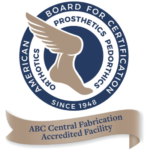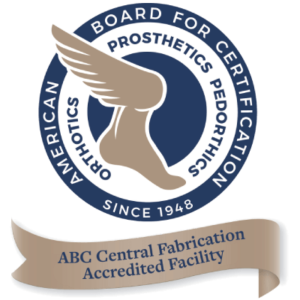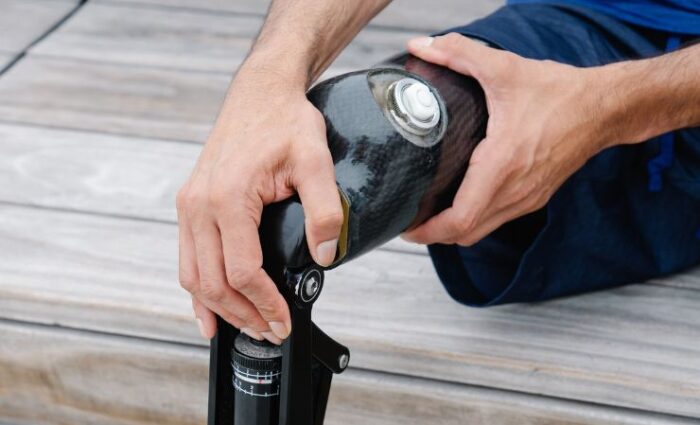How Advanced Fabrication Techniques Are Revolutionizing Prosthetic Functionality
The field of prosthetics has come a long way, with modern advancements in custom prosthetics transforming both the look and functionality of these vital devices. From 3D printing to the use of adaptive, lightweight materials, today’s prosthetic fabrication techniques are providing users with devices that offer more mobility, comfort, and control than ever before. These innovations enable greater personalization, so each prosthetic can meet the unique needs of its user, improving quality of life and independence.
This guide explores the latest fabrication techniques that are revolutionizing custom prosthetics and highlights how these advancements are shaping the future of mobility and support for users.
The Shift to Custom Prosthetics: Why Personalization Matters
No two people’s needs are exactly the same, especially when it comes to prosthetics. Custom prosthetics are specifically designed to fit the user’s body, lifestyle, and unique mobility requirements. This customization enhances comfort, functionality, and appearance, allowing users to engage more fully in their daily lives and activities.
Recent advances in fabrication technology have made custom prosthetics more accessible and effective, leading to a growing emphasis on personalization in prosthetic design. Here’s a look at the fabrication methods and materials making these developments possible.
1. 3D Printing: Precision and Speed in Prosthetic Manufacturing
3D printing, also known as additive manufacturing, has become one of the most exciting advancements in prosthetic fabrication. This technique builds a prosthetic layer by layer based on a precise digital model, allowing for a high degree of accuracy and customization.
- Precision and Fit: 3D printing enables prosthetists to create devices tailored to the user’s specific measurements, improving the fit and reducing discomfort. For users, a well-fitting prosthetic means greater mobility, less chafing, and a more natural range of motion.
- Speed and Accessibility: 3D printing significantly speeds up the production process, reducing the time from initial fitting to delivery. This can be especially beneficial for children and others who require adjustments or new fittings frequently.
- Design Flexibility: 3D printing makes it easy to incorporate aesthetic and functional customization, allowing for designs that reflect the user’s personality or unique functional requirements.
At Grace Prosthetic Fabrication, our use of 3D printing ensures that each prosthetic we create is precisely crafted to meet the individual needs of the user, providing both comfort and reliability.
2. Advanced Lightweight Materials for Enhanced Comfort and Durability
Traditional prosthetics were often made from heavy materials like wood or metal, which could be uncomfortable and restrictive. Modern prosthetics, however, are fabricated from advanced, lightweight materials, making them easier to wear and more durable.
- Carbon Fiber: Known for its strength and light weight, carbon fiber is frequently used in prosthetic fabrication to create strong, flexible limbs that are easy to maneuver. This material is especially useful in prosthetics designed for athletic activities, as it provides high durability without added weight.
- Thermoplastics: Thermoplastics are used to create prosthetic sockets and other components, offering a comfortable, flexible fit. Thermoplastics can be easily molded to match the user’s anatomy and are resistant to wear, making them a popular choice in custom prosthetics.
- Silicone and Gel Liners: For users who require added comfort or are prone to skin irritation, silicone and gel liners provide cushioning between the skin and prosthetic. These materials are soft and flexible, creating a comfortable barrier that reduces friction and prevents skin issues.
Using lightweight, durable materials enhances comfort and longevity, ensuring that custom prosthetics provide reliable support while being comfortable to wear for extended periods.
3. Bionic and Microprocessor Technology for Greater Control
Bionic technology has made significant strides in recent years, with microprocessors and sensors now used in prosthetics to enhance functionality and responsiveness. These components allow users to control their prosthetics with ease, making movements feel more natural.
- Microprocessor-Controlled Joints: For users with above-knee or other joint-related prosthetics, microprocessor-controlled joints can mimic the motion of natural joints, making walking, running, or climbing stairs smoother and easier.
- Sensors for Real-Time Adjustments: Sensors in advanced prosthetics monitor the user’s movements, adjusting the prosthetic’s response in real-time. This makes it possible to walk at different speeds or on various terrains without manual adjustments.
- Integration with Nerve and Muscle Signals: Some high-tech prosthetics use sensors that respond to nerve or muscle signals from the body, allowing for a more intuitive experience. This means that users can control their prosthetics using subtle muscle movements, which enhances precision and functionality.
Bionic technology is making it possible for users to experience greater independence and control, providing a closer approximation to the natural movement of biological limbs.
4. Improved Socket Designs for Comfort and Stability
The socket—the part of the prosthetic that connects to the residual limb—is crucial for comfort and stability. Advances in socket design have focused on creating a secure, adaptable fit that can accommodate changes in the user’s limb shape or size.
- Adjustable Sockets: Some sockets are designed with adjustable elements, allowing the fit to be fine-tuned for each user. This is particularly useful for users who experience changes in limb size due to factors like swelling or weight fluctuations.
- Vacuum-Assisted Suspension: Vacuum technology helps create a secure fit between the prosthetic and residual limb, reducing the risk of slipping and enhancing stability. This technique also improves blood flow, reducing pressure sores and promoting skin health.
- Flexible Inner Liners: Soft, flexible inner liners provide a comfortable fit and adapt to the user’s body over time. This helps prevent irritation and pressure points, making the prosthetic more comfortable to wear.
These socket advancements make it easier for users to wear their prosthetics comfortably, promoting greater mobility and reducing discomfort.
5. Enhanced Aesthetics and Personalization Options
Today’s custom prosthetics are designed not only for functionality but also for aesthetics, allowing users to personalize their prosthetics and express their unique style. Many individuals find that having a prosthetic that aligns with their identity and preferences enhances their confidence.
- Personalized Designs and Colors: With modern fabrication techniques, users can choose custom colors, patterns, and designs for their prosthetics. This can range from subtle, skin-tone matching to bold, artistic designs.
- Custom Covers: Prosthetic covers allow users to add flair to their devices, choosing from options that look like natural limbs or that display artistic designs. These covers can be easily swapped, allowing for versatility and personalization.
- Realistic Prosthetics: For users who prefer a natural look, advanced fabrication techniques now make it possible to create realistic prosthetic limbs that closely resemble human skin and anatomy.
At Grace Prosthetic Fabrication, we understand that aesthetics are important to many users. Our goal is to help each individual feel proud of their custom prosthetic by offering options that reflect their personal style and preferences.
Contact Grace Prosthetic Fabrication for Prosthetic Fabrication
The field of custom prosthetics is rapidly evolving, with advanced fabrication techniques creating devices that are more functional, comfortable, and personalized than ever before. From 3D printing to microprocessor technology, these innovations are empowering individuals with enhanced mobility and confidence.
Grace Prosthetic Fabrication is committed to staying at the forefront of prosthetic technology, offering custom solutions that are tailored to each user’s needs and lifestyle. If you’re looking for a custom prosthetic designed with both precision and compassion, contact us today to learn more about our advanced fabrication services and discover how we can help you on your journey to enhanced mobility and quality of life.






